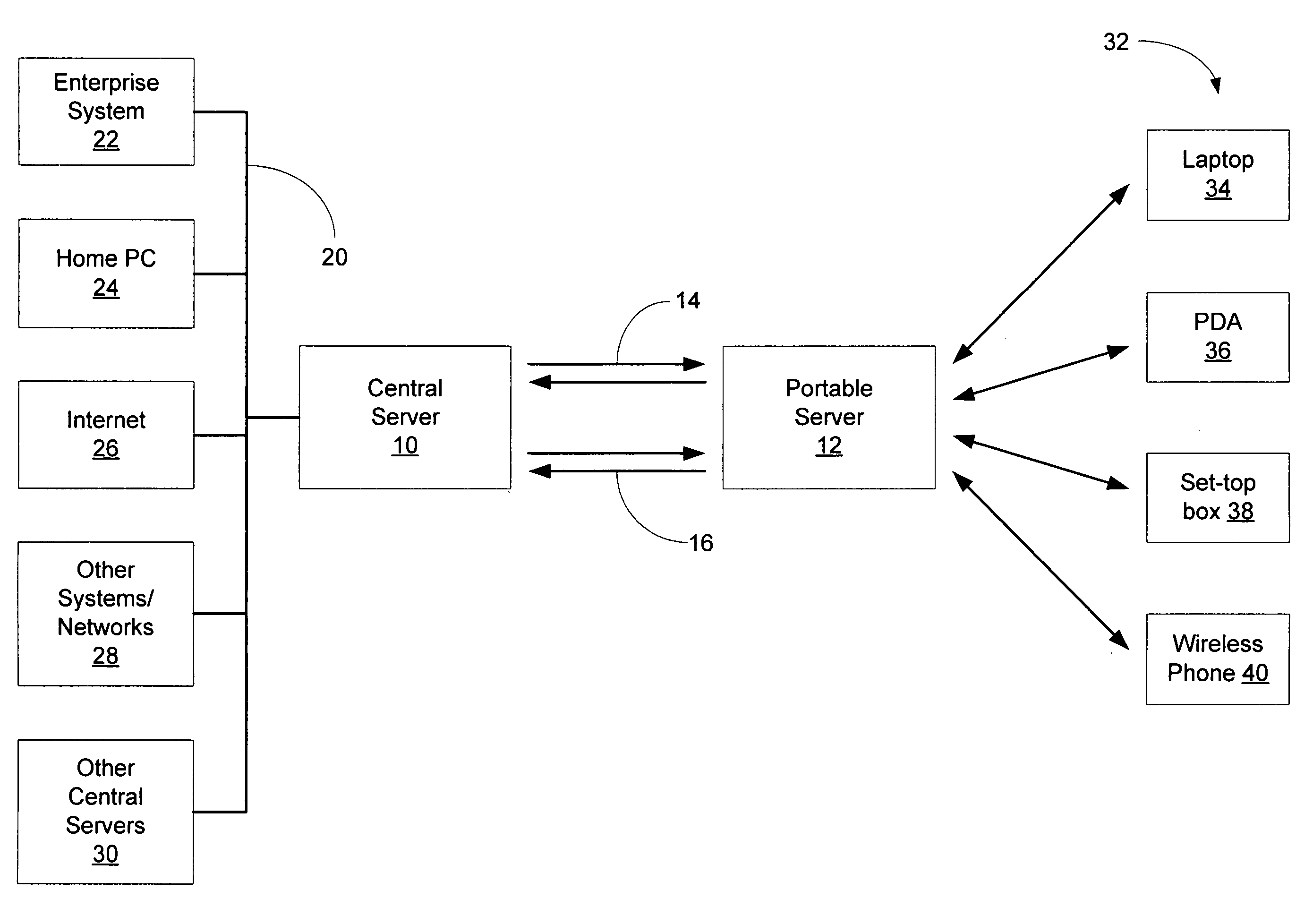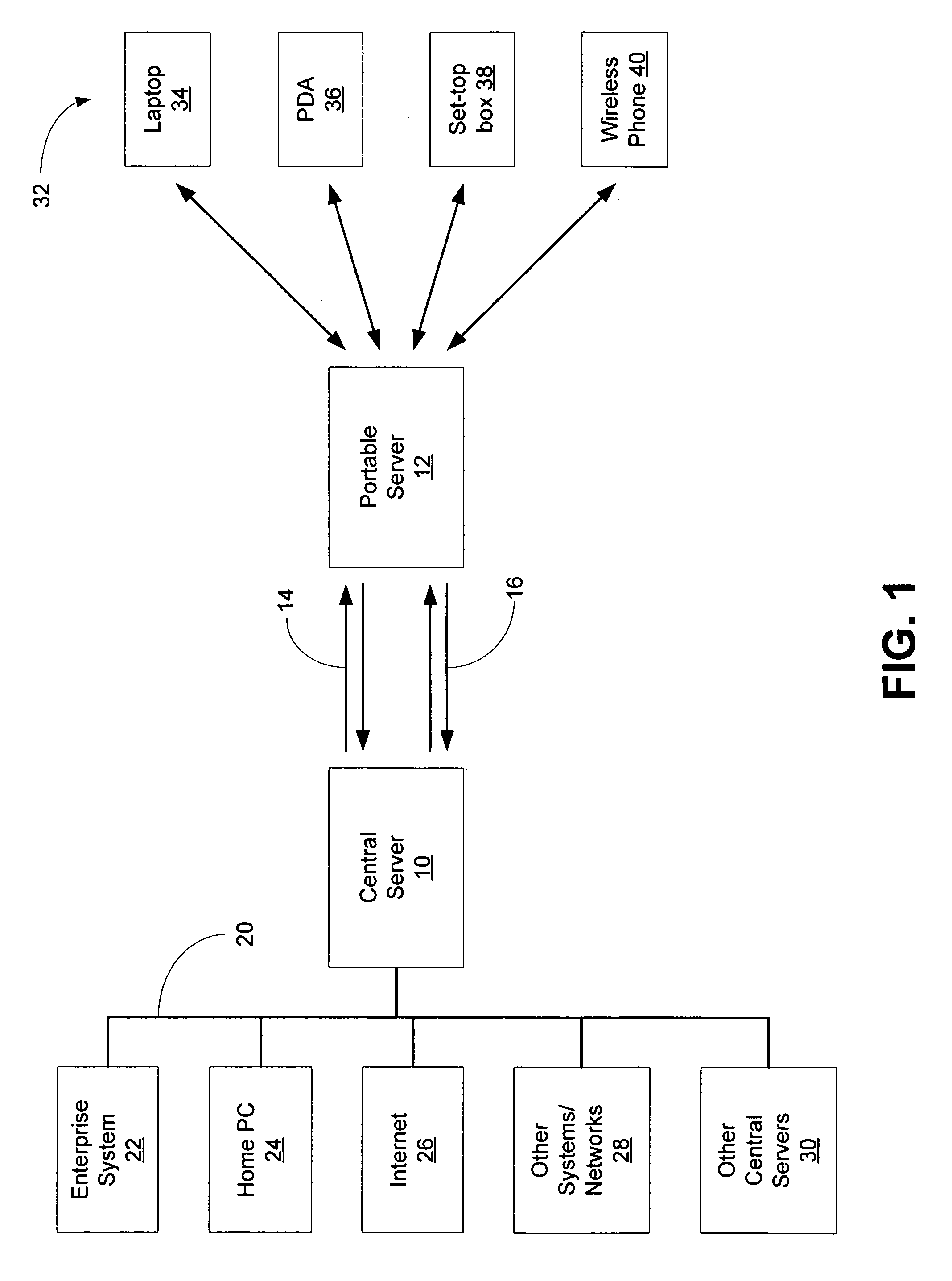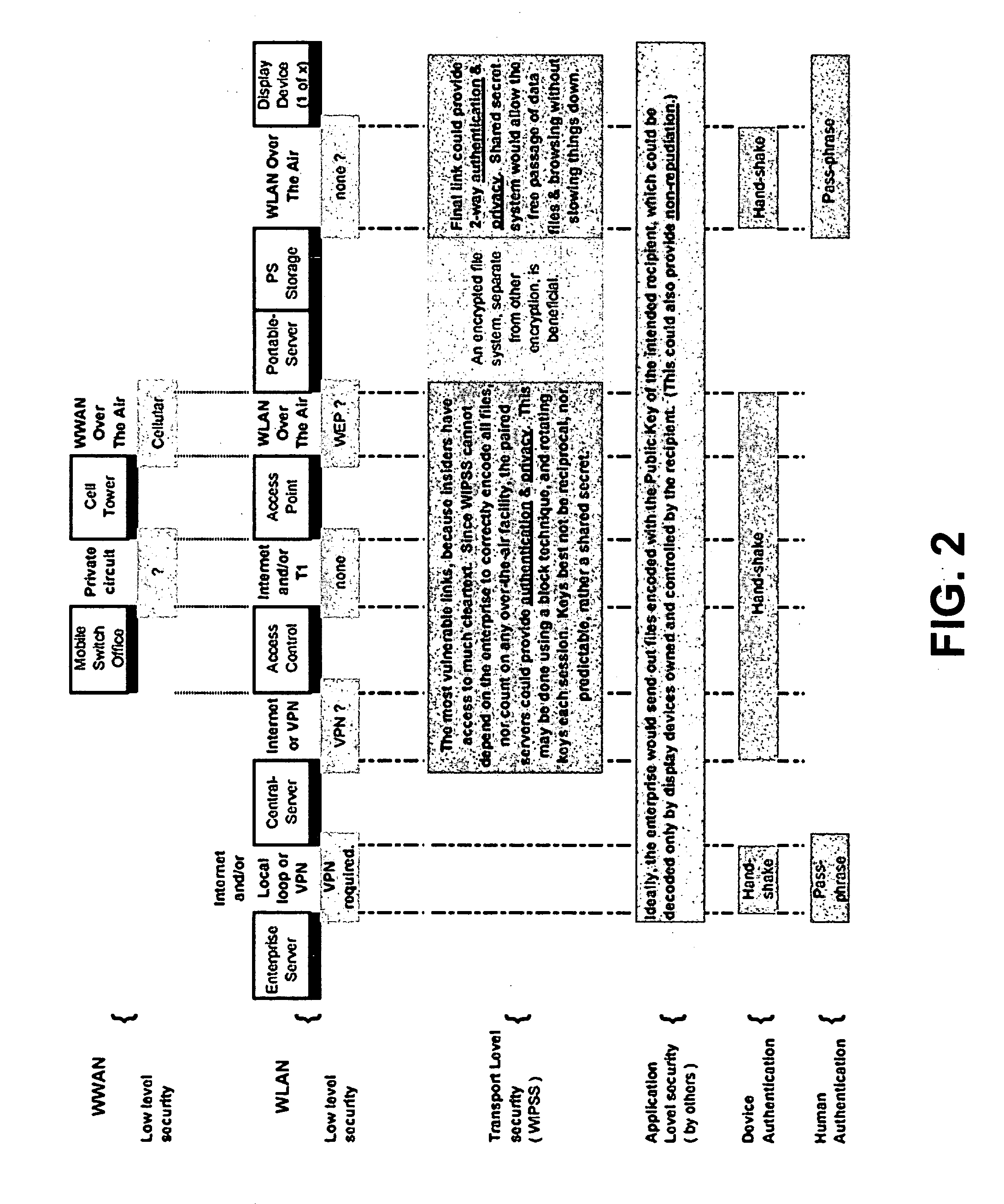In practice, however, given the current state of
wireless data communications technology, the data communications capabilities of the office worker (and corresponding efficiency and productivity) vastly outweigh that of the mobile worker.
Difficult RF propagation caused by weak signals and / or multipath and / or interference.
Channel-loading caused by traffic peaks, and the resulting latency.
High cost of “On-demand” airtime.
Time wasted using the problematic “Inquiry / Response” technique of accessing information.
Replies are typically short, consistent with the storage memory and display screen limitations on these devices.
Typical problems with Pull-initiated communications are as follows: (1) limited memory and slow transmission speeds focus these devices on simple answers to simple questions; (2) the answers that are received are held in memory without any attempt at security; (3) if used for e-mail, there is no common ‘sent mail’
record (that is, common among a person's other e-mail capable devices); (4) RF reliability and availability; (5) old downloaded information may be used if the owner forgets to request the most resent version of a document; and (6) there is no guaranteed delivery, because the
system counts on the user requesting a repeat transmission if the information is garbled.
A Push
system works best when the target device is always turned on, which may present battery life challenges.
The major challenge for Push technologies is that the device may not be appropriate for the information being sent to it.
As noted above, typical problems include: (1) limited memory and slow transmission speeds focus these devices on simple answers to simple questions; (2) the answers that are received are held in memory without any attempt at security; (3) if used for e-mail, there is no common ‘sent mail’
record; and (4) RF reliability and availability.
Typical disadvantages with this approach include: (1) the user must stay in the location until done; (2) if using web-based
file storage, one must know in advance what one wants to download and arrange for it to be available; (3) there is no single store of information, i.e., different files and versions of files will exist on a user's PocketPC,
home computer, office computer, and
laptop; and (4) many files are shared with others, so that a file change may cause irreconcilable versions when one finally “Docks.”
However, WLANs are not suitable for users who spend much of their time in vehicles, traveling from one point to another, because WLANs are short-distance devices (by FCC power restrictions) and are typically used as a data communications infrastructure inside of buildings.
Data transmission speeds are significantly slower than WLANs; however, these are the only technologies that are able to maintain contact with users in typical travels around the state.
Wireless data-only networks are similar to cellular, but current deployments have been limited to metropolitan areas.
Thus, latency from queuing and slow transmission speeds will often be a significant problem when using these networks.
In the current communications model, when a wireless connection path is not available to the wireless infrastructure equipment, any of the services the enterprise could provide are unavailable until the user can leave the dead area and logically reconnect.
Dead-spots are sometimes caused by
weak signal strength resulting from normal propagation losses.
Increasing the power of the transmitters is not a good solution in most radio systems because it increases the level of interference encountered by all other users, and degrades battery life.
A system of diversity antennas is commonly used in fixed systems, but is impractical with personal equipment because the small size leaves no room for a second antenna, and if such an antenna were added, it may not have sufficient separation from the primary antenna to provide reliable diversity operation.
Furthermore, all carriers do not cover all geographic areas, nor have
roaming agreements in these areas.
It is difficult for the average user to contend with these issues.
The “On-demand”
connection model over wireless connections can prove intolerable given the connection problems and the long latencies encountered sending and receiving large files over the wireless networks.
In addition, that security may or may not be engaged.
When one examines loading of voice (for example) at a single
cell site, however, the peaks and valleys over the course of a few moments are more severe than the average, leading to “system busy” conditions when the site is overloaded.
In data systems, the equipment is programmed to retry again, colliding with other similar units, actually limiting
throughput below optimum.
Eventually all the traffic is handled (or abandoned), but with unhappy users and much
delay.
This resulting latency is often greater than the patience of the user.
Any
delay leads to user dissatisfaction, which increases churn (switching carriers).
Since information is more valuable when delivered in a timely manner, trying to provide the bandwidth to users in real time leads to building expensive reserve infrastructure just to provide connections during peak periods.
The higher the peaks relative to overall average usage, the greater the expense to the carrier to provide the reserve infrastructure.
These costs will quickly add up as users download / upload presentations and other large attachments, or view web pages.
Users, however, are not interested in waiting for their information.
This significantly increases costs to both the user and the provider.
(Building infrastructure to
handle peak usage levels means that wireless access points are unused much of the time.
At this point the mobile worker has spent considerable time and received little information.
The length of the response can also be an issue if, for example, the information being returned is a
medical record and the paramedic has to wait for the transmission to finish before administering a critical medication.
Similarly, if repair information is being downloaded, the duration of the transmission may seem excessive to the customer who is paying the repair person by the hour.
Since information is transmitted
too slowly, and because it is difficult and
time consuming to structure an inquiry, a possibly better alternative that can be used is to deliver as much information as possible “in advance.”
However, a connection that fast would require that the wireless carrier allocate almost all the available bandwidth to one user.
 Login to View More
Login to View More  Login to View More
Login to View More 


